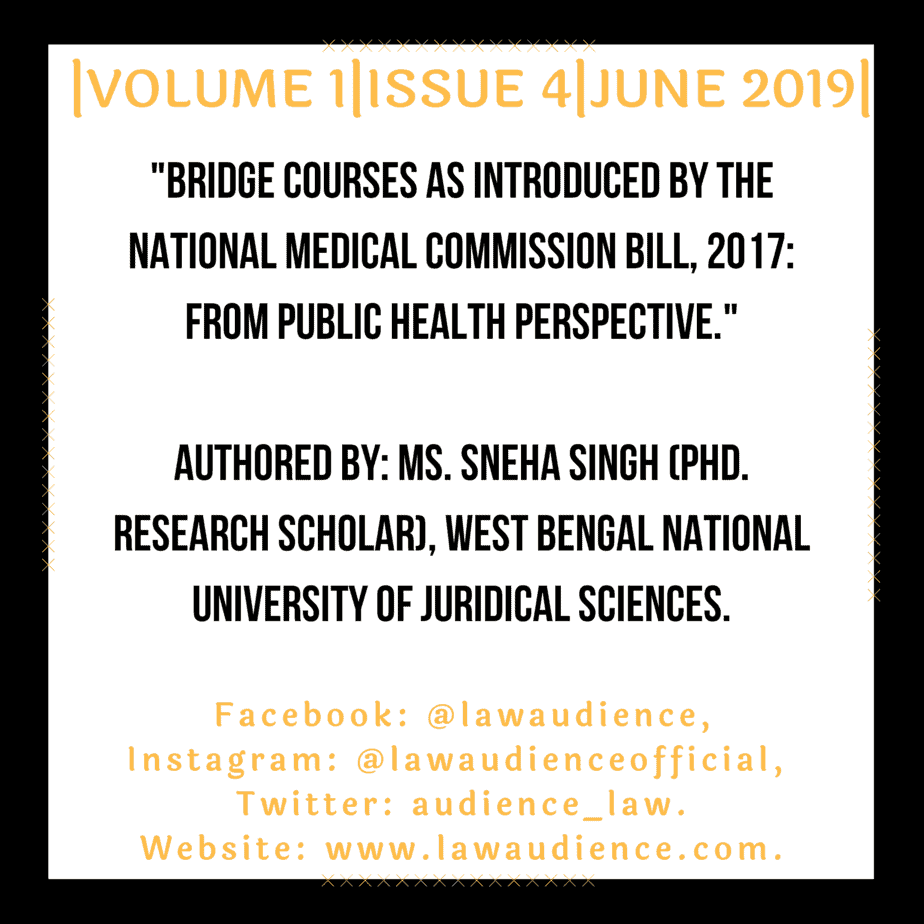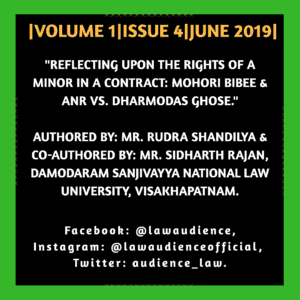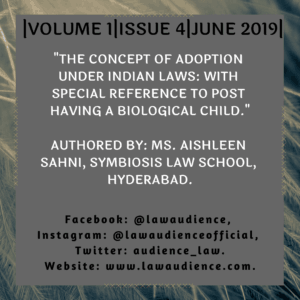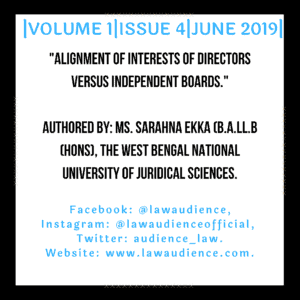Authored By: Ms. Sneha Singh (PHD. Research Scholar), West Bengal National University of Juridical Sciences.
I. ABSTRACT:
“As a Nation, public health has been one of the sensitive and prioritised concerns of India. The National Medical Commission Bill, 2017, introduced two very diverse propositions namely, the establishment of the National Medical Commission and the concept of Bridge Courses. The interest of this paper is the Bridge Course talked about in this Bill. Bridge Course as per the Bill is a Short-term course for the different medicals systems prominent and prevalent in India governed by the board of AYUSH (Ayurvedic, Unani, Siddha And Homeopathy) to practice and prescribe allopathic medicine to patients. This led to a lot of noise from doctors, patients, think tanks on all front. It was well criticised and applauded by the fraternity. However, this paper critically analyses the impact of such introduction on the end consumers- patients. The paper discusses in length the pros and cons of such Bridge Courses from the Public Health perspective understanding the impact and effect on the health of the public at large.
The National Medical Commission Bill 2017 has lapsed due to the dissolution of the 16th Lok Sabha. However, after the commencement of the 17th Lok Sabha, the Government is planning to re-introduce the said bill and that’s the reason the author chose to write and discuss the bill in details[1].”
II. INTRODUCTION:
Health care is one of the major components of the development of any country. In India, health care and its modalities are primal and of equal concern of the legislative and the citizens. The concern generates louder debates and interest among larger sections of the society. Medicine is an indispensable part of health. In India, medicine is practiced either in its conventional or alternative forms. While the conventional form of medicine is Allopathy, alternative medical systems include traditional oriental medicine, homeopathy and Ayurveda. Co-existence and utilisation of the conventional and alternative medicine is a phenomenon both in the developing as well as the developed countries.
Ayurveda is the oldest herbal system of medicine commonly practised in India and fulfils 80% of the medical needs. These medicine systems are like sisters who are related but have their unique features, acceptance and recognition. They do not cross each other domain and are in administration separate. The compartmentalisation is so unique to even let adjudicatory authorities clearly demarcate the domain and limit the prescribing of medicines and administration of drugs.
For instance, allopathic doctors were forbidden from prescribing non-allopathic drugs such as Ayurvedic, Unani, Siddha or Homeopathic by rendering them liable to prosecution under both civil and criminal laws leading to the cancellation of registration and/or imprisonment[2]. There is the possibility of being labelled as “quack” for such cross practise of medicine which is very demeaning for the profession which is otherwise considered equivalent to the magical powers of the Omnipresent.
This paper analyses the impact of latest introductions by The National Medical Commission Bill, 2017, and more particularly the Bridge Course, as proposed to be introduced, as a Short-term course for the different medicals systems prominent and prevalent in India to practice allopathic medicine and prescribe the same. The impact of such Bridge Course will be analysed from the health care perspective.
III. OVERVIEW ON THE TRADITIONAL AND NON-TRADITIONAL STREAMS OF MEDICINE PRACTICED IN INDIA:
The officially recognised system of health in India is fragmented in terms of medicines. The streams of medicine commonly practiced range from Ayurveda, Yoga, Unani, Siddha, Homeopathy, Naturopathy and Allopathy. The preference of medicine is dependent on individual choices and each of these streams symbiotically exists. Healthcare is a primary concern and the diversified choice of drugs is also due to the natural abundance of resources in terms of agro-climatic zones, biotic provinces and habitats of specific species which contributes to ample options for species used for medicinal values by traditional communities. India is famous for the traditional system of medicines and has proved to be inspirational for many developing countries. The unique distinction in the recognised systems of medicine also delineates the approach of one towards the other.
While Ayurveda is a well-defined conceptual framework that has been consistent throughout the ages, Homeopathy came to India only in the 18th Century to be assimilated as an integral part of health care. Out of the many sub-fields of medical science- Allopathy and Homeopathy remain prominent. Samuel Hahnemann, founder of Homeopathy believed that if a patient had an illness, it could be cured by giving a medicine and the environment and case study of the particular patient held great importance.[3] In Homeopathy, each patient is considered to be unique with its traits and individual preferences. Treatment is meted out on case basis with no “one-size fits all” mechanism as in Allopathy.
Each stream of medicine has its own importance and has had their share of the limelight during the medieval and independence era of the Nation. But the approach of allopathic medicine blurred the existence of these systems of medicine to the extent that the Central Government initiated a series of measures to improve the position of these traditional or alternative medicine systems in the health care system in terms of vitality and contribution towards the primary health care needs of the Country. An empirical study in the state of Chhattisgarh proved that a large population of the country prefers allopathic medicine in the case of an emergency. It also suggests that people experience more side effects on allopathic medicines. In long term diseases, people prefer Ayurveda and Homeopathy for a cure[4].
Research suggests that resistance is increasing against antibiotics which increases the deviation towards the other stream of medicines and also makes the other streams economically cost effective with better results[5]. Medical systems are distinct since time immemorial according to the explicit philosophy followed by each system. Rationalism was the philosophy followed by the allopathic medicine and other system followed the philosophy of “Empirist”. The empirical approach also called a vitalist approach is known as holistic or alternative medicine. It forms the basis of the Naturopathic traditions. In the Empirist approach, the body is seen as a whole and considered as per its interactions with the environment. Treatment is based on the symptom of the body in unique conditions instead of conditions defining the means of treatment. Classical Homeopathy is a perfect example of this approach. Rationalists needed to explain the illness to be able to develop specific treatments and a body of scientific knowledge with greater precision. The reasoning leads to fining of denominators and groups of symptoms found identical in all patients suffering from an assumed disease. Rationalists thought of destroying the disease while ignoring the innate powers of the body to heal itself. Interventions and injection of medicines to eradicate disease often lead to the weakening of the body. Hippocrates, the Father of Medicine was considered to be an empiricist as he maintained a primary trust in nature[6]. The deductive thinking allowed the growth of the rationalist thought in the middle ages and the popularity continues.
Regulation of all the medicine systems in India was with the Medical Council of India and Directorate of AYUSH (AYUSH stands for Ayurvedic, Unani, Siddha and Homeopathy). Medical Council of India was supreme and the Government of India ensures the co-existence and standardisation of the procedures and important formulations. There are statutory bodies but The National Medical Commission Bill, 2017, intends to revamp its all for integrated regulation and better outreach of services. The National Medical Commission Bill, 2017, is so framed to replace the Medical Council of India with the National Medical Commission as well as introduce reforms in the medical education prevalent in the country for standardisation and quality improvement[7].
IV. BRIDGE COURSES AS INTRODUCED BY THE NATIONAL MEDICAL COMMISSION BILL, 2017:
The National Medical Commission Bill, 2017, Bill No. 279 of 2017[8], as introduced in the Lok Sabha is a bill to provide for a medical education system that ensures availability of adequate and high-quality medical professionals; that encourages medical professionals to adopt latest medical research in their work and to contribute to research and has an objective of periodic assessment of medical institutions and facilitates maintenance of a medical register for India while enforcing higher ethical standards in all aspects of Medical Services.
One of the points of interest and topic of discussion introduced by the National Medical Commission Bill, 2017, is Bridge Course in between the traditional and non-traditional stream of medicine practised in India. The Bill proposes short-term Bridge Courses for doctors practising or learning to practice alternative medicines particularly of Ayurveda, Siddha, Unani and Homeopathy. It would address the shortage of doctors in the country and more so the availability of doctors in the rural areas of the nation[9].
The National Medical Commission Bill’s content on Bridge Course under Section 49 raised concerns and disagreements amongst doctors of the Nation. The Central Council of Homeopathy too opposed the idea of Bridge Course which would allow homeopathy and other AYUSH Practitioners practice modern medicine through a short term course. The targeted beneficiaries of this initiative would be Allopathy pharmaceuticals companies whose revenue would increase; private AYUSH medical colleges in the country with increased admissions and the number of doctors who can claim to work in the emergency section of the hospitals with a short cut to the practice of Allopathy.
While the MBBS doctors prefer urban postings, AYUSH doctors are comfortable sticking to the roots and practising in the rural areas. Something is always better than nothing. Training a layman to the requirements of medicine in an emergency would be difficult than to an AYUSH practitioner as it would be convenient and diversifying instead of transgressing. The desperation of medical help can be reduced by primary care and referral of serious matters to the specialists[10] in the nearby urban area would be a feasible and workable option.
In a clarification given by the authorities in respect of the Bridge Courses introduced by the National Medical Commission Bill, 2017, it was emphasised as to how the bill seeks to fill in gaps of availability of health care personnel facilitating trained AYUSH practitioners to expand their skills through the Bridge Course and provide preventive and proactive allopathic cure for the immediate attention of patient and his welfare. But not each beneficiary is satisfied and elated. The Centre Council of Homeopathy and other homeopaths are opposing the concept of bridge courses as a demeaning step against their Dignity. In the words of few practitioners, it would “lower the dignity of the system of alternative medicine” while they are more preferred in various states such as Uttar Pradesh, Maharashtra etc. in comparison to the traditional medical practitioners. When an individual is taught and trained to practice one system, the practice of another is unethical and would lead to unwarranted circumstances. The popularity will be reduced and the roots of medical systems will be lost in this process of assimilation[11].
However, states such as Maharashtra, Assam, UK, Haryana, Karnataka and Uttar Pradesh etc. have already amended their Acts and permitted AYUSH professionals to practice modern systems and prescribe all modern medicines and the Bill will provide a uniform basis for the policy if inclusion throughout the country. Even if the bridge course is introduced, it will only be for prescribing specified medicines at specified levels. The provision is intended for prescribing a small number of medicines including Over The Counter drugs at the Sub-Centre/PHC level.
V. IMPACT OF SUCH BRIDGE COURSES ON PUBLIC HEALTH:
In India, the doctor-patient ratio is as low as 1:1655 against the recommended ratio of 1:1000 by the World Health Organisation (WHO)[12]. A Public Health Research Institute in New Delhi conducted a study in the year 2014 and highlighted that as many as 32% of primary health centres are in remote and tribal areas and is the alternative for medicine practitioners who carry out clinical care[13]. The rural healthcare system is worst affected because lucrative offers and expertise lures MBBS doctors to urban health care private units and the existing infrastructure crumbles for the want of expertise.
The primary health care centres (PCHs) run without doctors and are often sustained at the cost of the non-medico person manning with the use of his “skills”. Primary Health Care Centres (PCHs) deal with basic medicine, treatment of minor ailments, immunization, child healthcare and natal care. Presence of Private hospitals in rural areas is a luxury which the overwhelming majority of the population can neither afford nor enjoy.
Bridge Courses as and when introduced will allow medicine experts to switch and cross the river that distinguishes between Allopathy and alternatives to medicine. It will render them with recognition of being medical graduates- commercially viable to cure diseases. Increased number of medical practitioners in rural areas will be a step forward to the improvement in the standards of health care. The rural and tribal people will be blessed to have medical practitioners but the integrated treatment can be a stop-gap solution and not the penultimate response to their health care needs. But, as rightly discussed as a concern, improperly trained AYUSH doctors may do more harm than benefit.
It has to be considered in this context that the decision of the Government of India was an aftermath of the anti-behaviour of the MBBS doctors to the rural posting imposed on them as a part of their curriculum for post-graduate courses. After completing the MBBS course, doctors focus more on their post-graduate preparations. The government was forced to introduce the service of rural areas or “rural posting” for doctors completing their post-graduation failing which these candidates have to indemnify by a bond which is usually of sky-scraping value. Trained AYUSH practitioners undergo rigorous training and internship[14]to make them able and apt to fill in the gaps at such health care units at primary level. This can improve the doctor-patient ratio and provide to the common people in remote areas of medical assistance.
VI. CONCLUSION:
The abhorrence of “rural posting” by the MBBS doctors is the main cause behind the concept of Bridge Courses to be introduced by the National Medical Commission Bill, 2017. At present, there are petitions pending in the Supreme Court as well as the High Court of Calcutta for waiver of the indemnity bond to be paid for failure to accept “rural posting” and complete disregard of the concept of “rural posting”[15]. This lure of urban posting badly affects the health care of the members of the rural population.
In the words of Mahatma Gandhi, the heart of the Nation lies in its villages. These villages are beaming with humans who are deprived of basic medical attention due to the indifference shown by the MBBS graduates. The Allopathic doctors are not to be blamed either because the training and the social set up promotes untold egalitarianism wherein they are promoted to fraternise of lucrative positions in private hospitals and a lifestyle which cannot be maintained in the “rural posting”. Nevertheless, medical practitioners under AYUSH voluntarily prefer the rural areas as the overwhelming majority exposes them to a unique population of diseases which can be treated on a case basis and the results are satisfying.
Bridge Courses is not innovative or unheard of idea. It is more of a tested and tried formula which is apt for application in the country. It has been, if not in word, in practice followed in some of the developing and developed countries such as Sri Lanka and China. The health workers were trained and allowed to prescribe Over the Counter drugs which reduced the burden of the short number of medical practitioners. India, in terms of Infrastructure and connectivity, has drastically improved.
Therefore, it provides for a fertile ground for the initiation of Bridge courses. The AYUSH medical practitioners will be able to serve at the rural level, there will be the creation of more job opportunities of Medical Officers, overall public health of the population in the rural areas will improve without jeopardising on the recognition of MBBS doctors with serious and acute cases being duly referred to the doctors in the nearby urban place of medical facilities. Improvement in rural health can lead to an overall equilibrium of public health in the country.
But the introduction of a new initiative brings with itself a state of caution which cannot be overlooked. Regulation of these courses will be important and so will be the admission to these courses. It should be seen as a beneficial understanding or value addition in the already existing qualification. Therefore, admission to such courses should be done by entrance exams of such standards to ensure quality over quantity. After all, they will be Doctors treating humans in a cross-domain and larger stake is on hand.
[1] Govt Plans to Re-Introduce National Medical Commission Bill, THG PUBLISHING PVT LTD (Jun. 18, 2019, 10:30 PM), https://www.thehindubusinessline.com/news/govt-plans-to-re-introduce-national-medical-commission-bill/article27762134.ece.
[2] Ujala Verma, Allopathic vs. Ayurvedic Practices in Tertiary Care Institutes of Urban North India, 39 IJP 52-54 (2004).
[3] Samuel Hahnemann, The Organon of Medicine, 1810, Google Books (Jun. 18, 2019, 11:00 PM), https://books.google.co.in/books?id=n3YC435gKFIC&printsec=frontcover&dq=organon+of+medicine&hl=en&sa=X&ved=0ahUKEwiTkNrCyvPiAhVJT30KHbD0DDcQ6AEIKjAA#v=onepage&q=organon%20of%20medicine&f=false.
[4] Kushagra Nagori, General Awareness on Allopathic, Ayurvedic and Homeopathic System of Medicine in Chhattisgarh, India, 03 IJPPS 4 (2011).
[5] Ibid.
[6] Glen Pavelich (McClare), Allopathic vs. Holistic A Historical Debate in Medicine, quia (Jun. 18, 2019, 11:30 PM), https://www.quia.com/files/quia/users/medicinehawk/2407-Vet/all-vs-hol.pdf.
[7] Shri Jagat Prakash Nadda, The National Medical Commission Bill, 2017, (Mar. 15, 2019, 10:00 AM), http://164.100.47.4/BillsTexts/LSBillTexts/Asintroduced/279_2017_Eng_LS.pdf.
[8] Ibid.
[9] Meghna, NMC Bill: Inclusion of Ayush Practitioners, Bridge Course to MBBS, Medical Dialogues (Mar. 15, 2019, 10:30 AM), https://medicaldialogues.in/bridge-course-for-ayush-to-become-mbbs-national-medical-commission/.
[10] Healthcare delivery works on a referral system so that it does not put an extra load to the secondary and tertiary care facilities. Many SCs and PHCs i.e. point of contact in rural areas are functioning without doctors. AYUSH practitioner may, if posted, can provide better care. It is expected that the quality of primary and preventive healthcare available to rural citizens would improve as a result of giving proper training to AYUSH doctors. This also needs to be viewed in the light of certain states having already permitted them to practice modern medicine. Available at https://mohfw.gov.in/sites/default/files/Binder1_4.pdf (Last accessed on 15.03.2019.).
[11] As per Supreme Court rulings, AYUSH doctors cannot prescribe any allopathic medicine until there is a provision in the Act. The bill has an enabling provision for the doctors.
[12] A Preliminary Report of The Committee on The Reform of The Indian Medicine Central Council Act 1970 and Homoeopathy Central Council Act, 1973, Niti Aayog (Mar. 15, 2019. 11:21 AM), http://niti.gov.in/writereaddata/files/document_publication/Preliminary_Report_of_Committee_AYUSH.pdf & https://mohfw.gov.in/sites/default/files/Binder1_4.pdf.
[13] Medical Education, Training & Research, (Jun. 18, 2019, 11:30 AM), https://mohfw.gov.in/sites/default/files/3698745632145698.pdf .
[14] AYUSH Courses are for five years and subjects like medicine, physiology, anatomy and community medicine are common in the curriculum.
[15] Compulsory Rural Service For Medical Post Graduates Not Bonded Labour: Karnataka HC, Live Law (Jun. 18, 2019, 11:00 PM), https://www.livelaw.in/news-updates/compulsory-rural-service-medical-post-graduates-bonded-labour-karnataka-hc-142023.



